47GHz signals in rain and gusty winds
By SM0DFP Per Green December 30 2006
Introduction
The SK0UX/B beacon on 47,088.1GHz was recorded in rain with gusty winds (up to 17m/S) to show how the 47GHz signals are affected. When analyzing the recording, two distinct Doppler signals are seen, one from trees and one from rain. Doppler signals are spread, similar to Aurora and rain scatter on lower VUSHF frequencies, thus creating a hissing sound, but the Doppler is, as expected, much higher.
The measured path:
The Beacon is temporary placed in my shack, pointing out an open window on the 6th floor, well above nearby trees and houses, toward a group of trees at an approximate distance of 1 km. The trees constitutes my horizon (seen from the window) in that direction. As there are some lower trees between my QTH and the horizon, it is not a well defined spot that represents the reflexion point, but rather an area approximately 300m to 1km away. The reflexion area has no other objects, such as buildings, towers or masts, only trees.
Equipment used:
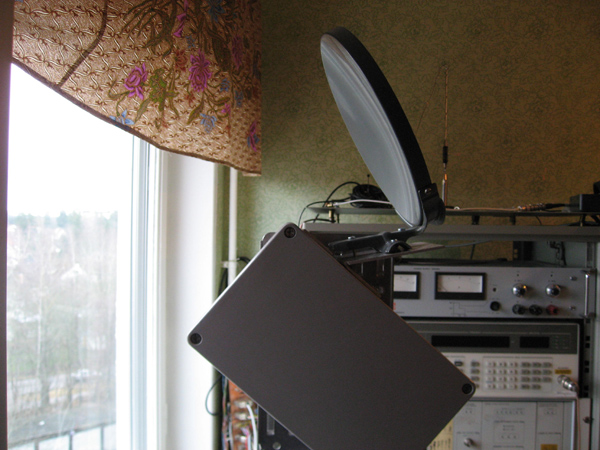
The 47GHz beacon is made of DB6NT units, producing about 20mW of RF power. A 25 cm offset feed dish is used, so the transmitted beam is rather well defined.
The receive end of the path is on top of the same house, about 14m above the beacon antenna. A 25cm Procom dish is used. The RX antenna is remotely controlled both in azimuth and elevation. The antennas can not se each other.All signals that are received are scattered/reflected from trees etc.
Observations:
When moving the antenna, there is a point where maximum signal strength is received, however, the direction is more diffuse compared to when working a line of sight QSO. When receiving the beacon signal, it is never a pure tone, even with no wind, but always a noisy hissing signal, much similar to Rain Scatter on e.g.10GHz. For clarity, it should be mentioned that when listening to the beacon with line of sight, the tone is pure.
When there is a change in wind speed or wind direction, a Doppler spread of the received signal is heard. In the attached recording, the narrow band noise peak is the reflexion from the moving trees, and the wide band noise peak is the reflexion form rain. To demonstrate the bandwidth, I did tune the receiver so that all signals fell outside the pass band on the high side, then slowly shifted so all the signal fell outside the pass band on the low side. The total frequency shift is approximately 3,5 KHz..
I have recorded the signal and while listening to it you may have a look at some Spectran screen shots below .
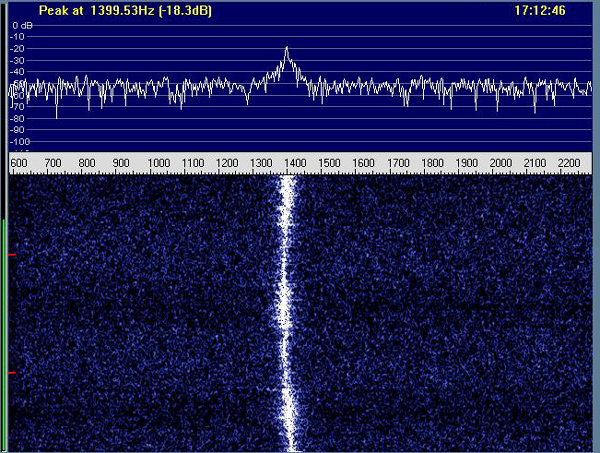
First is a recording with no wind and no rain or snow. This recording is used as a reference. To demonstrate the influence on path loss, the window is repeatedly open – closed – open etc. You can clearly hear the difference. The signal level with open window is slightly affecting the AGC in my RX, this has limited the audio level. An extra path attenuation of 6-8 dB is seen when the window is closed. As also can be seen and heard, the signal has an inherent fast QSB of approximately 10 dB.
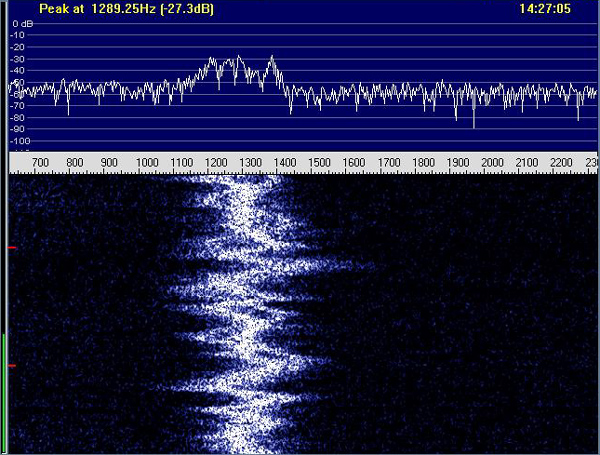
The Spectran screen show how the Doppler from the tree reflexion is both positive and negative, deviating about 250Hz from the original frequency. As many as five Doppler paths can be seen simultaneously at some places.
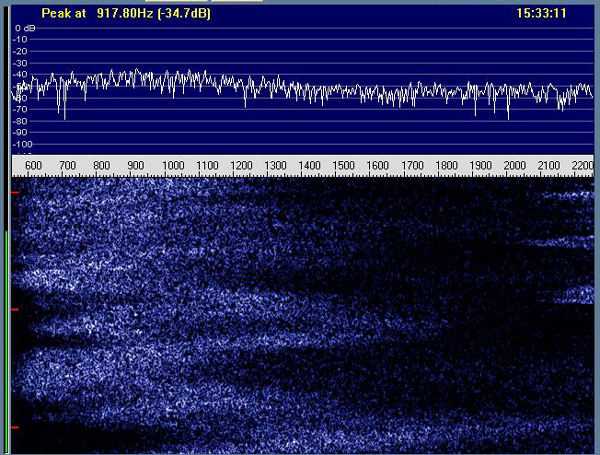
Above, you can see the frequency shift between the tree reflexion (right) and the rain reflexion (left). Some of the signal falls outside of the screen.
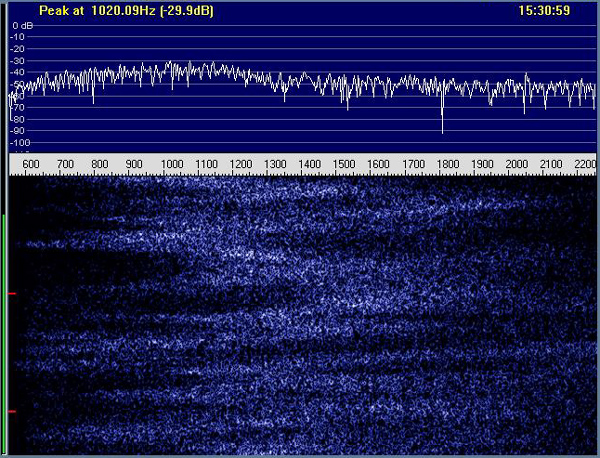
The scattered signal from rain is very wide band and the peak deviation extends outside the graph. Each Spectran time stamp represent 10 seconds.
Finally.
The propagation on 47GHz seems very promising with different properties than the lower microwave bands. Further studies will be made and published, so stay tuned. If you need a signal to monitor or a station to work, do not hesitate to get in touch with me, the beacon is possible to beam in any direction on demand. Other stations in the Stockholm area that are QRV on 47 GHz are (SM5QA) and SK0CT.